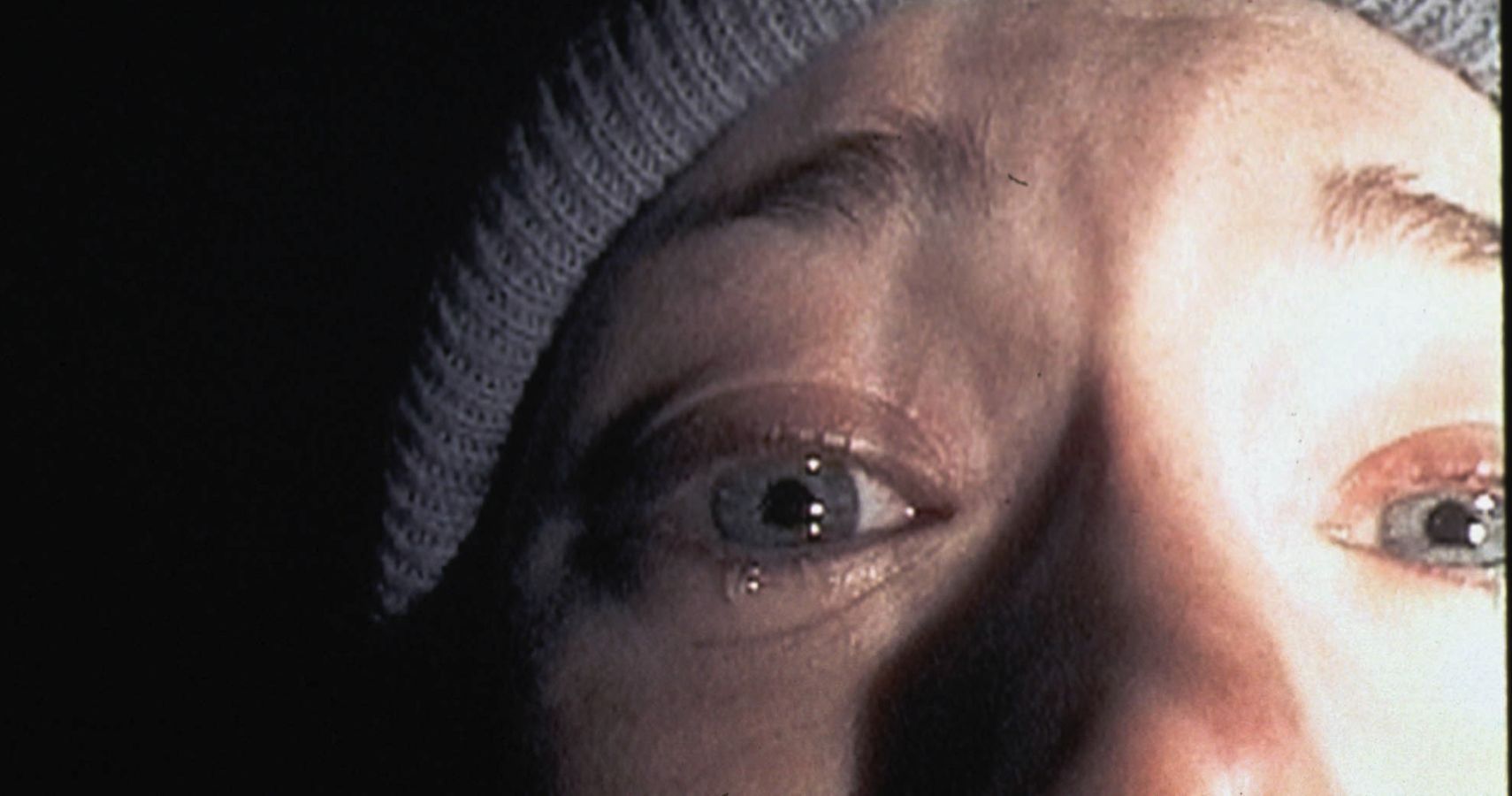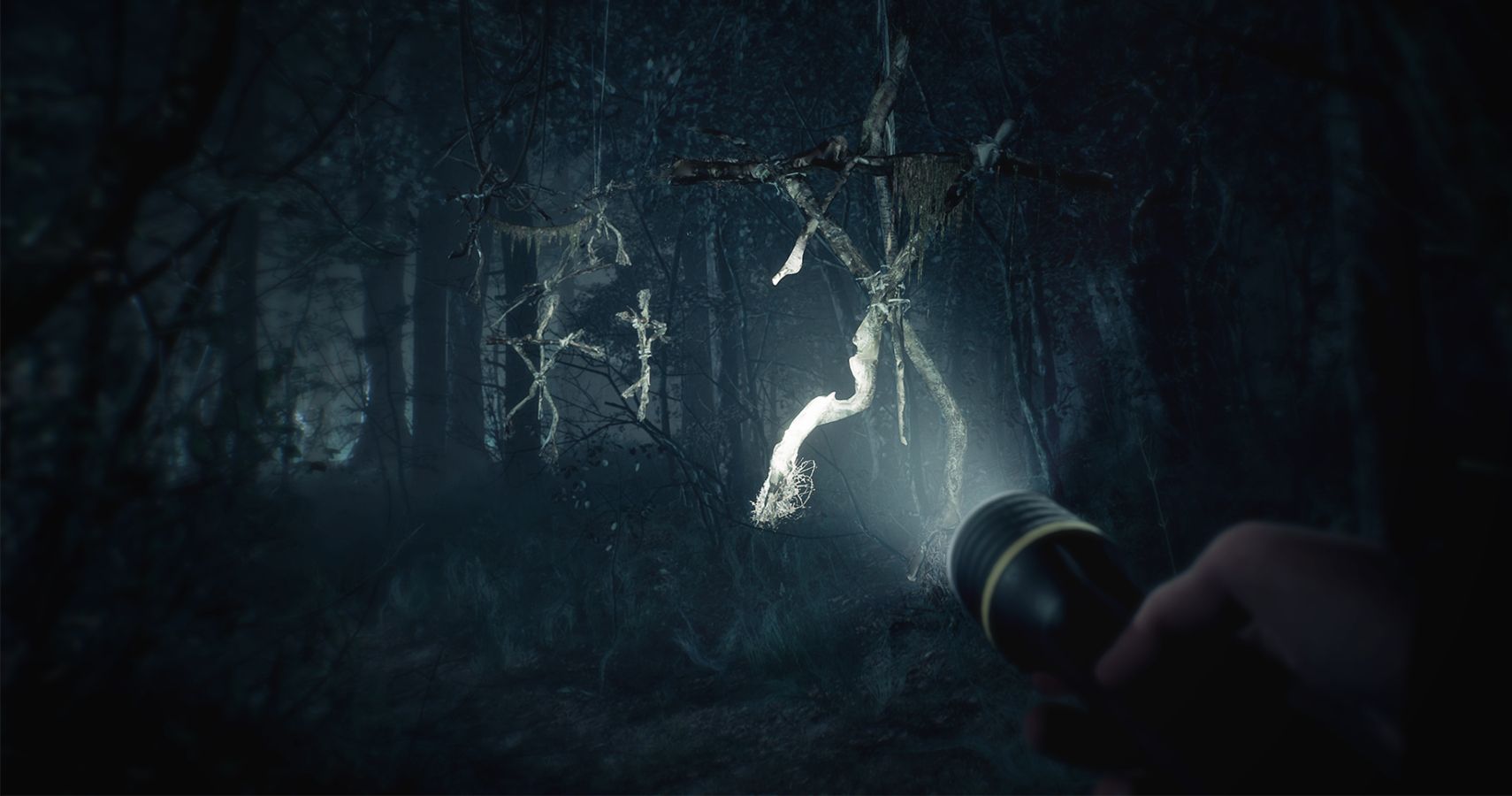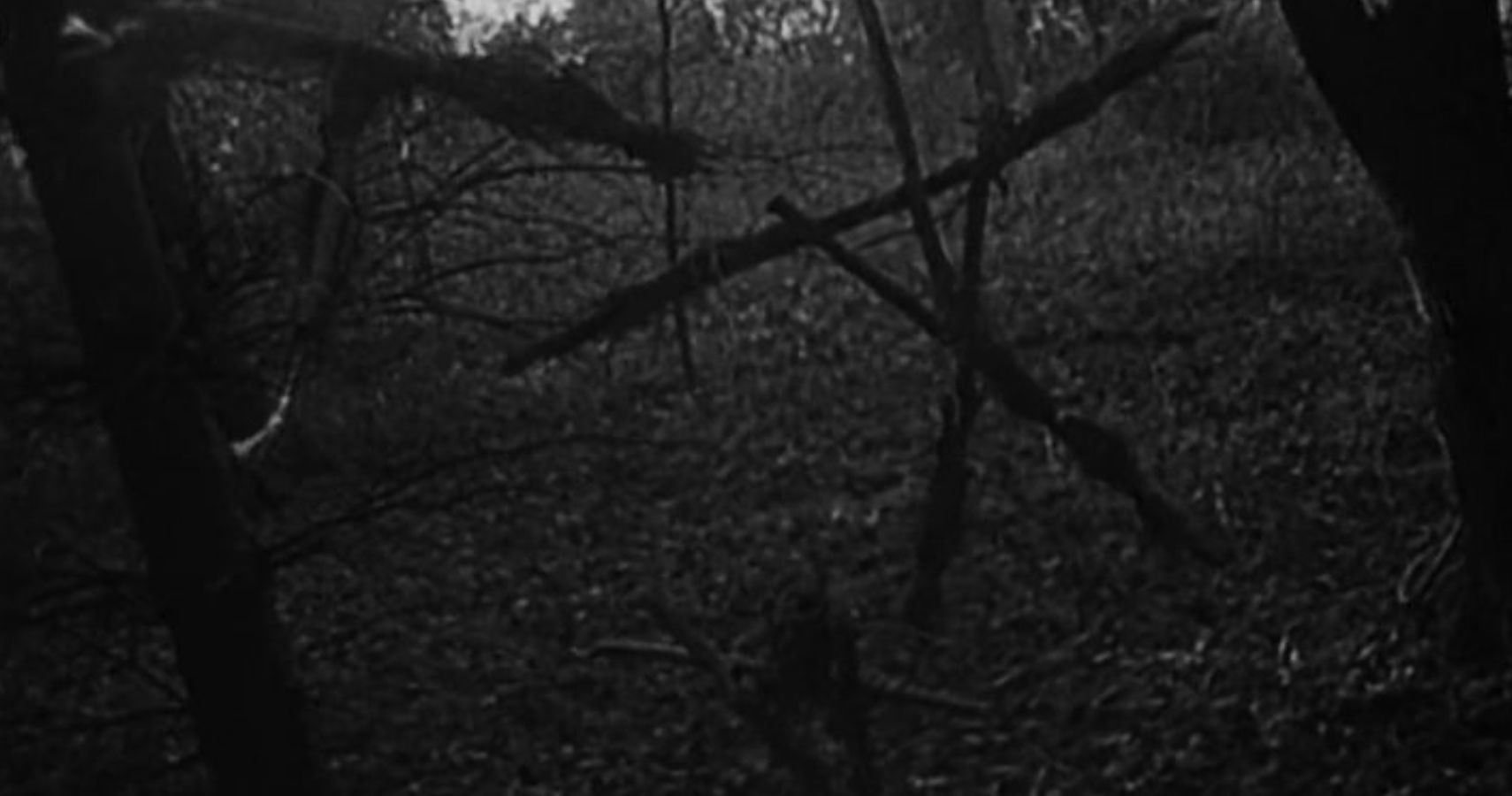Minor spoilers for Blair Witch and major spoilers for The Blair Witch Project.
The scariest part of The Blair Witch Project was never the titular witch.
While the 1999 classic was marketed with the hype of maybe, just maybe getting to see a glimpse of what was terrorizing its protagonists, that hype was ultimately for naught. The only thing viewers ever got a good glimpse of was an intimate look at the inside of Heather Donahue’s nostrils. At the time, this choice was controversial, and left many mainstream moviegoers upset.
However, in retrospect, it proved to be a brilliant subversion of genre expectations. When watching The Blair Witch Project in 2019, far removed from all the pre-release buzz, the most striking thing is how bone-chilling it still is. Not because of the implied threat or the spine-tingling lore, though. No, the real horror of the movie is watching a close-knit group of friends begin to lose their grip and turn on each other. Watching their camaraderie give way to in-fighting, threats, and antagonism is equal parts heartbreaking and skin-crawling, because it feels so intimate and real. By the time every main character is dead, you almost feel a sense of relief that their suffering is over. It’s a grim and bold choice that leaves an impact long after the credits have rolled.
Against all odds, this year’s Blair Witch game manages to recapture that same sense of sadness and desperation. In a genre where developers are often obsessed with grossing the player out in order to elicit shock, Bloober Team wisely steers clear of the giblets and pasta sauce – for the most part. Instead, the threat doggedly pursuing the player is almost always ambiguous, and the real horror lies in how protagonist Ellis begins to unravel shortly after entering the dense Black Hills Forest.
Indeed, the unique way in which Ellis unravels is where some of the title’s biggest chills come from. It’s readily apparent in the early moments of the game that Ellis suffers from PTSD after his time spent serving in the Gulf War, along with other traumas that we won’t spoil here. When nighttime falls in the game, so too does Ellis – into a black void of his own nightmares and repressed memories. Players are forced to hear bullets whizzing by, watch soldiers’ bodies pile up, and run towards burning buildings marked up with Arabic text inexplicably supplanted into the Maryland forest. Blair Witch, unlike so many games on the market, shows war for what it truly is: a traumatic event for all involved.
Ellis’ own memories, then, and his struggles to properly cope with them, prove to be the real monsters of Blair Witch. Sure, there are spectral encounters galore – ambiguous, mostly invisible creatures that growl and skitter along the ground. But they only serve, really, as a motivator to keep the player running deeper and deeper inside the protagonist’s own psyche. Not only that, but it’s not entirely clear if these, too, are just manifested forms of Ellis’ PTSD. Unlike the ill-advised and extremely non-canon Book of Shadows: Blair Witch 2, this game mostly stays away from making it clear as to whether or not the monsters are real.
In the original film, each transgression against the protagonists slowly starts to challenge what they think is possible and what they hold dear. Only the ones that hold onto their friendships, their memories, and their beliefs last until the very final moments. In Blair Witch, players get to be in control of this process. They’re not helpless bystanders, forced to watch shaky camera footage of people gradually being driven to the brink of insanity. They’re given a cell phone, for use if they want to reach out to their ex, a VA hospital, or a handful of other contacts. They’re given a dog, who can be used as a comfort, a tool, or both. They’re given these lifelines in hopes that they’ll maintain their sanity, despite the game testing it at every twist and turn.
Yet, even with this control, that murky sense of dread and abject terror of watching reality give way to delusion is still persistent. The game presents players with situations that fly in the face of everything they know about the natural world, and forces them to wade through them in order to progress. This instills such a sense of panic and tension that it’s easy to forget to pet your dog, or call your ex, or check your messages. The game sucks you in with such relentless fervor that it recreates Ellis’ panic, and makes it easy to let your routine sanity checks fall to the wayside. Unlike games like Eternal Darkness: Sanity’s Requiem and Amnesia: The Dark Descent, Blair Witch uses mental health not as a gimmick, but as a vital part of the game’s narrative, made manifest in its mechanics.
This encapsulates why Blair Witch understands what made the original film work so well. By not directly showing a threat, by keeping gore to a minimum, and by building a narrative around a character’s mental anguish, Bloober Team creates an impenetrable atmosphere that serves the purpose of putting the player in a state of unease. While jump scares and gross-out imagery are few and far in-between, it’s that atmosphere which serves to keep players unsettled long after they’re done with the game.
Much like the iconic scene in the first movie, in which Heather tearfully apologizes to her camera, Blair Witch looks directly at the player and forces them to confront trauma and mental instability – then asks them to take control of it. The only question is, how much control can they ultimately gain?
Our review of Blair Witch will go live later this weekend.



